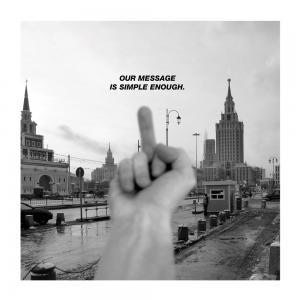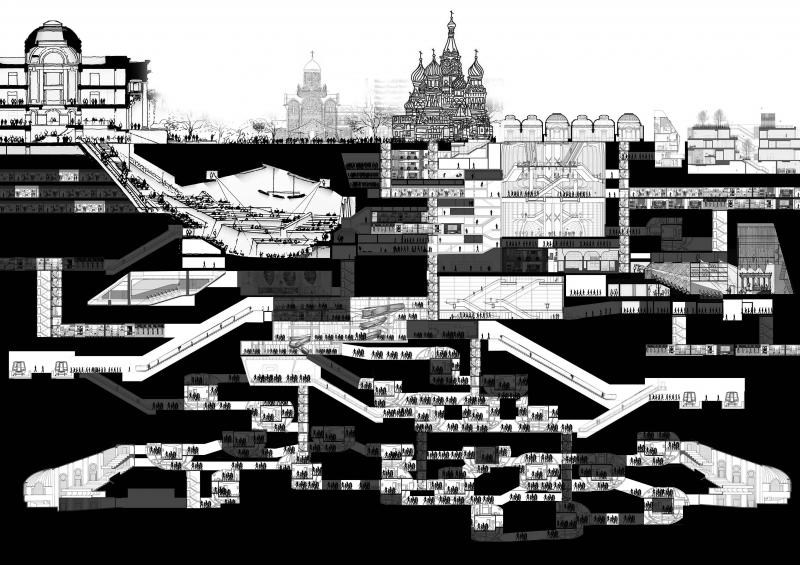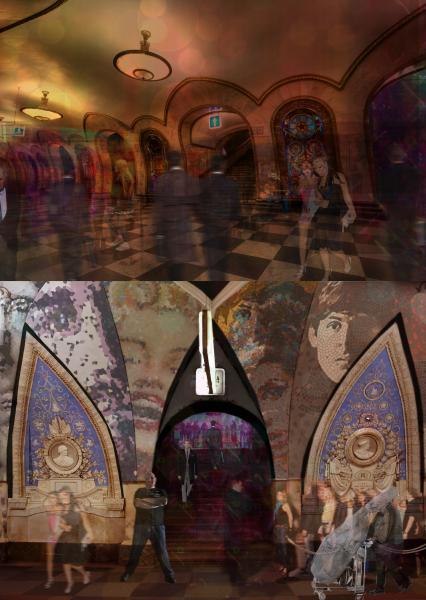Intermediate 7 develops conceptual models and diagrammatic frameworks that mediate between urban systems, architectural precedents and design approaches. We focused on visionary social machines in the context of Moscow’s nightlife in order to explore the ‘condenser club’ – the ultimate mixer and catalyst. Emphasising pragmatic research, infrastructural logic and relaxed methods, the projects delineated three areas of enquiry.
First, we examined the boundaries between the city and the ‘anti-city’. Dissident zones and decadent ‘infernos’ tantalised us with illusions of escape or entrapment. Acting as blenders and separators, nested megastructures collapsed numerous fragments and constructed trajectories along interwoven transcripts. These dystopian-realist scenarios remained aptly in-between fantastic provocations and pragmatic solutions to the city’s ills. Second, we synthesised infrastructures of flow and organisation to generate hybrid typologies.
We engineered social systems: networks and circuits loaded with programme. Conveyors of food chains, spines of art-factories and corridors of metro-labyrinths played on reversals of service and spectacle.
These decorated diagrams linked functionalist structures with intricate shapes and surfaces. Finally, we explored audience/performer relation-ships in adaptable sets. We injected dormant landmarks with dynamic mixtures of elements to facilitate mergers and crossovers. From flying-zoos and banya-bars to mood-tunnels, theatrical devices choreographed movements, framed images and staged atmospheres. As kaleidoscopic centrifuges, extravagant infrastructures and social transformers, our condensers dealt with extremes of functional intensity, material density and visual excess. Spectacular machines affected the operational appearance of the city, as captured in our diagrammatic matrices, hybrid drawings and visual scenarios.
Staff
Maria Fedorchenko
Tatiana von Preussen
Thanks to our workshop guests
João Bravo da Costa
Dirk Lellau
Jessica Reynolds
Gergely Kovacs
Ingrid Shroeder
Antoine Vaxelaire
Thanks to
Joseph Bedford
Brendon Carlin
Mark Campbell
Barbara-Ann Campbell-Lange
Monia De Marchi
Kenneth Fraser
Maria Mileeva
Kostas Grigoriadis
Eugene Han
Francesca Hughes
Sam Jacoby
Rosalie Kim
Fabrizio Matelana
Kathy O’Donnell
Damian Rogan
Nathalie Rozencwajg
Eva Sopeoglou
Brett Steele
Takero Shimazaki
Naiara Vegara
Thomas Weaver
and all other critics and guests
Atira Ariffin
A hybrid underground mixed music entertainment spaces is to hijack Moscow’s most prominent public transportation system and becomes the ultimate social condenser to the Russian capital city.
Strategically located in the heart of Moscow with existing four Metro station interchanges, the Labyrinth will feed on the travelling commuters, while sucking in the pedestrians from the city surface deep into the whirling pool of endless euphoria snaking hundred meters below the ground level.
The project is developed through the rapid experimentation of conceptual models and diagrammatic frameworks that mediate between urban systems, architectural precedents and design approaches.
The project is aimed to re-program the existing scenario by taking samples from Moscow's nightlife and creating a new social-machine that will stir up and catalyst Moscow's urban condition.
Structured with the main elements of nodes and linkages that transforms into musical venues, the programs are arranged according to different transitional speeds, ranging from high-speed to zero-speed programmatic spaces, carrying users through endless transition of unexpected musical experience.
The idea is to merge two conflicting system, the Moscow's entertainment/nightlife cinematic scenes and it's transportation infrastructure network and knot them together to function as social mixers or blenders.
Through the emphasis on pragmatic research, two elements of the existing Moscow Metro, nodes and linkages are extracted, analyzed and developed further as the main concept of the Networked Labyrinth.
The elements are then re-programmed, re-defined, re-structured, multiplied and densely condensed to create a new hybrid music entertainment spaces and venues which is plugged-in and hybridized to one of the main Moscow infrastructure system, the Moscow Metro, that stirs up, accelerates and catalysts the city.



































































